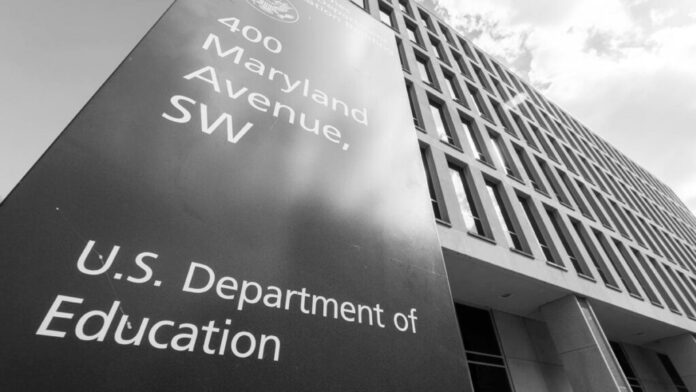by the El Reportero‘s news services
President-elect Donald Trump has vowed to eliminate the Department of Education, a move aimed at addressing concerns about the agency’s spending and perceived focus on “woke” indoctrination amid declining student performance.
“We will ultimately eliminate the federal Department of Education,” Trump said during a rally in Wisconsin, promising to stop the misuse of taxpayer dollars to promote ideologies many parents oppose.
Experts like Jim Blew, former Assistant Secretary for Planning, Evaluation, and Policy Development at the department, support the proposal. Blew argues that its core functions—such as allocating funds for low-income school districts, special education, and enforcing civil rights laws—could be reassigned to other federal agencies. For instance, the Treasury Department could handle student loans, while the Justice Department might enforce Title IX provisions.
The department’s annual $80 billion budget has been criticized for inefficiency, as curriculum decisions remain at the state and local levels. Critics argue that converting Title I funding into state block grants could empower local districts to allocate resources more effectively, although it might also risk poorer spending decisions.
During the pandemic, the department distributed billions in COVID relief funds, but academic performance still declined. Nine-year-olds’ reading scores fell five points in 2022—the largest drop since 1990—and math scores dropped seven points. Parents, frustrated by prolonged school closures and remote learning, became more vocal about concerns over political content in curricula.
Trump is not the first Republican to target the department. Ronald Reagan also campaigned to eliminate it but faced resistance in Congress. Trump’s plan, however, comes amid heightened dissatisfaction with public schools, which could provide political momentum.
The department also enforces civil rights laws, a role that expanded under the Biden administration’s redefinition of Title IX to include gender identity. Critics, including courts in some states, have pushed back against these changes. Trump has signaled plans to cut funding to schools promoting Critical Race Theory or controversial gender policies.
Some conservatives, like California school board member Jonathan Zachreson, worry that eliminating the department could reduce oversight over states with progressive education policies, such as those requiring schools to allow transgender students to use opposite-sex bathrooms. “Before you abolish the Department of Education, you need to fix a couple of things,” Zachreson said, emphasizing the need for clear Title IX guidance.
Education expert Andy Smarick noted that eliminating the department could limit federal power to advance specific agendas. While reducing bureaucracy appeals to many, it would also require states to handle more responsibilities with less federal oversight.
Federal funding itself has drawbacks. During the pandemic, teachers’ unions in California delayed reopening schools until they secured federal COVID relief funds, according to Zachreson.
To abolish the department, Trump would need Congress to pass legislation, requiring a supermajority in the Senate—a significant challenge. Some Republican lawmakers, like Senator Mike Rounds (R-SD), have already introduced bills to dismantle the department and redistribute its functions. However, teachers’ unions remain a formidable obstacle. Created as part of a campaign promise to the National Education Association in 1979, the department still has strong union backing. Union leaders, including Randi Weingarten, have criticized Trump’s plans.
Regardless of the department’s future, addressing recent learning losses will take years. Blew emphasized the need for ongoing reform to ensure underserved students receive the education they deserve. “The reform movement will continue until that injustice is erased,” he said.



